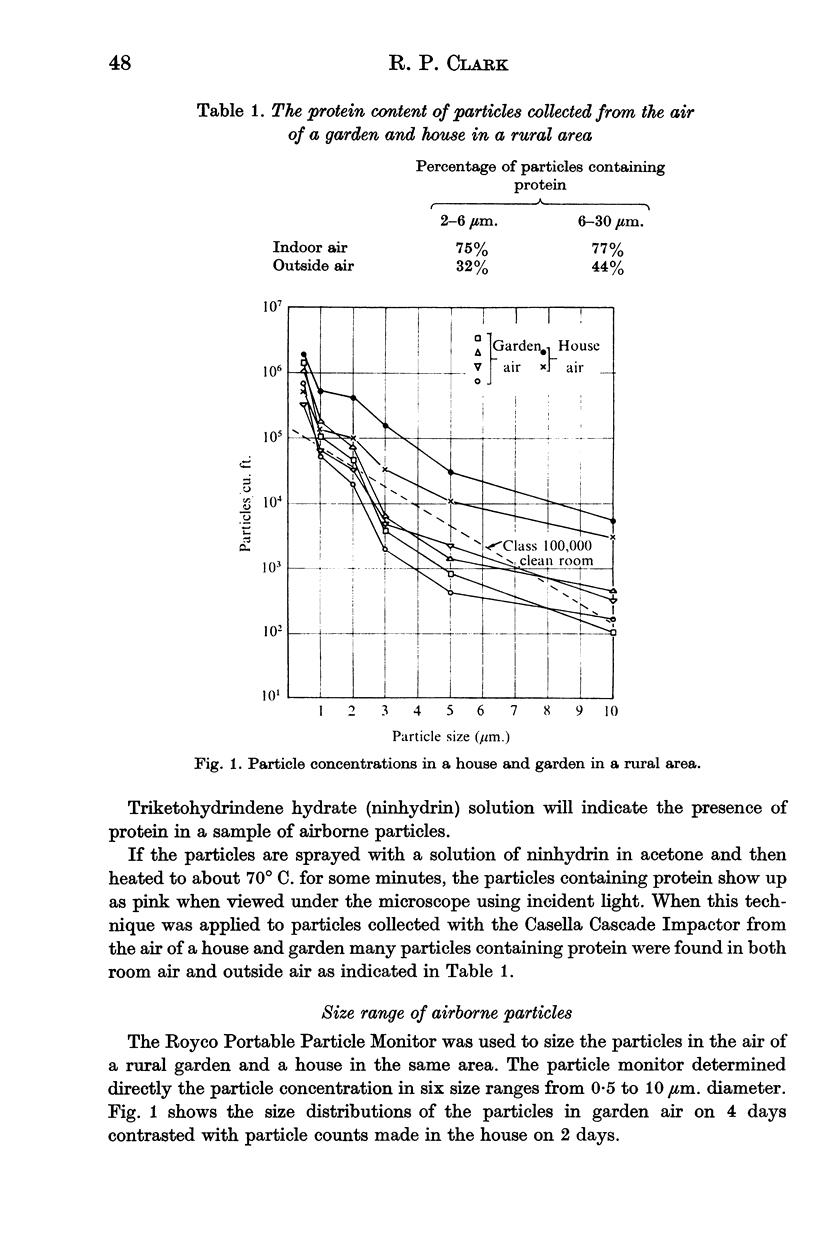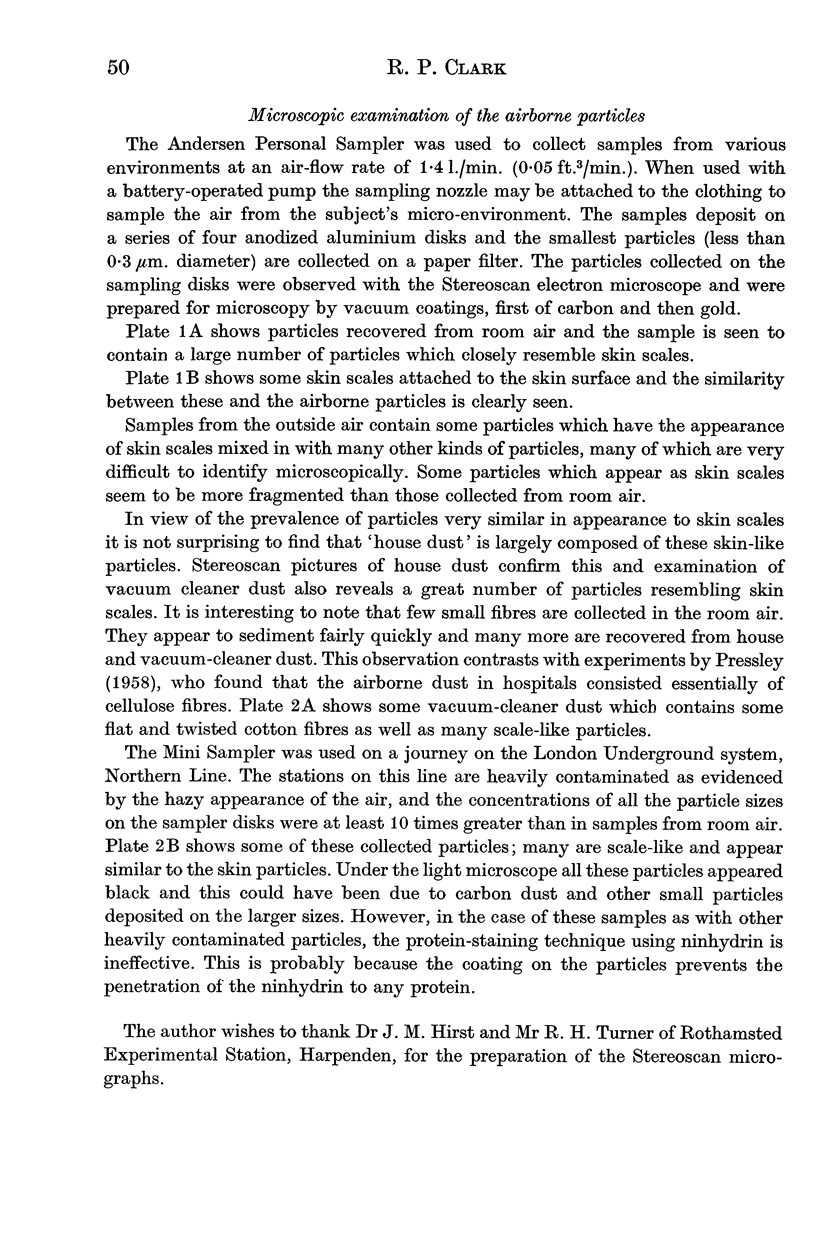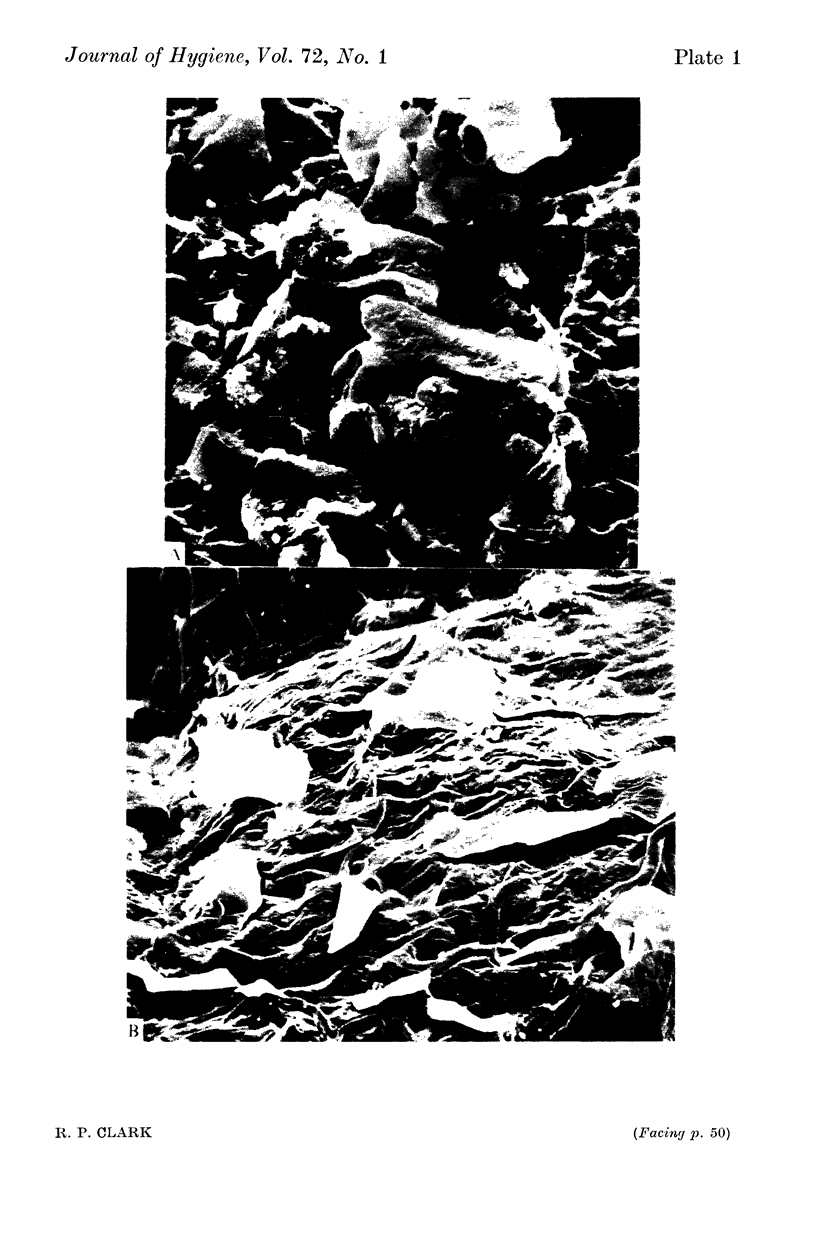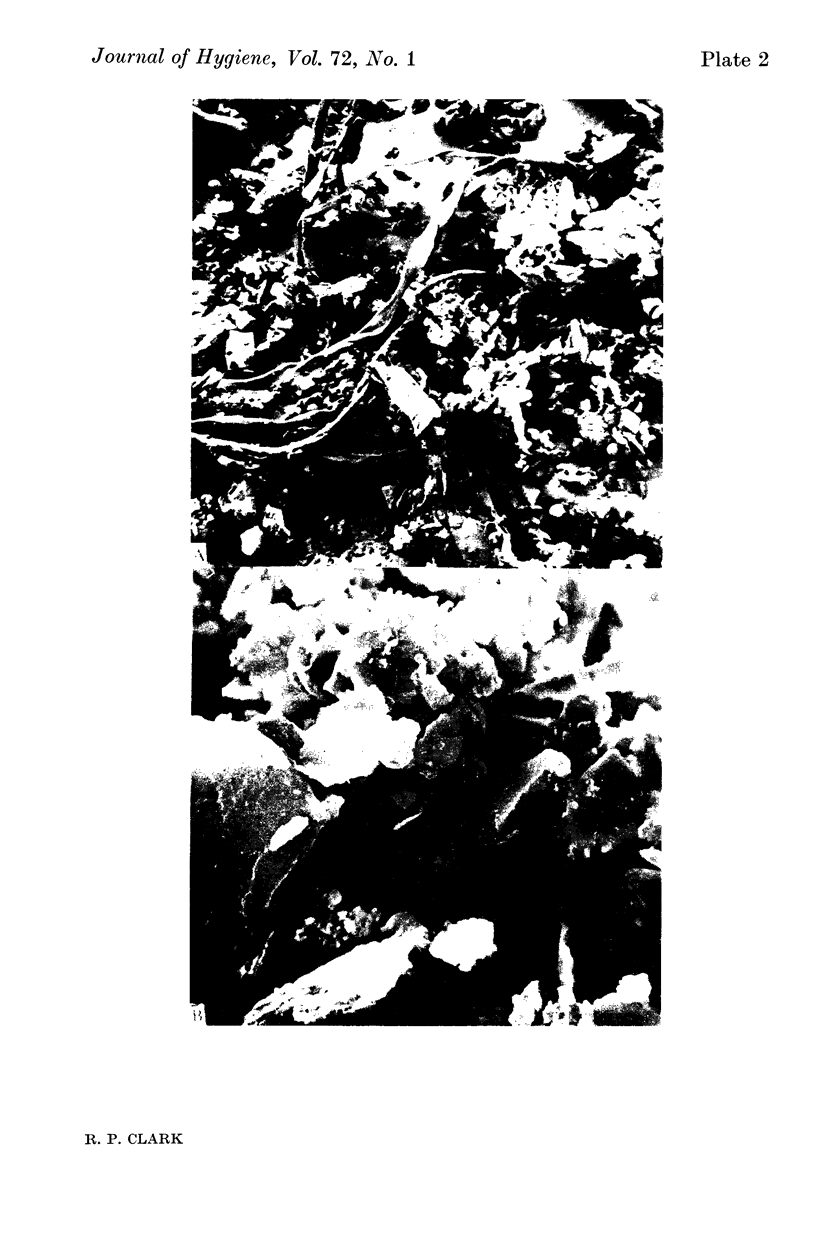Abstract
The air from a house and garden in a rural area has been sampled and the size distributions of the airborne particles have been determined. The particle concentrations are shown to be generally higher indoors. Changes in the particle concentration during various activities in a small room have been shown to be greatest for particles larger than 3 μm. diameter. Stereoscan microscopic observation has shown that many of the airborne particles in rooms and some from those in outside air appear to be scales of desquamated skin. The presence of protein in many of these particles complements the microscopic observations.
Full text
PDF






Images in this article
Selected References
These references are in PubMed. This may not be the complete list of references from this article.
- Clark R. P. Techniques for sampling and identifying airborne particles. J Physiol. 1973 Jul;232(1):5P–7P. [PubMed] [Google Scholar]
- DAVIES R. R., NOBLE W. C. Dispersal of bacteria on desquamated skin. Lancet. 1962 Dec 22;2(7269):1295–1297. doi: 10.1016/s0140-6736(62)90849-8. [DOI] [PubMed] [Google Scholar]
- PRESSLEY T. A. The fibre composition of hospital dust. Lancet. 1958 Oct 4;2(7049):712–713. doi: 10.1016/s0140-6736(58)91331-x. [DOI] [PubMed] [Google Scholar]






